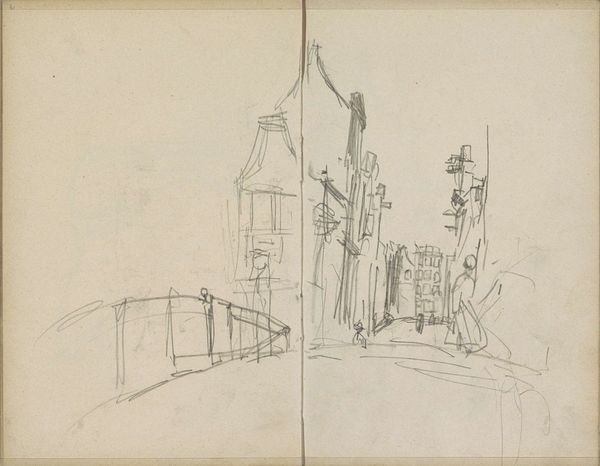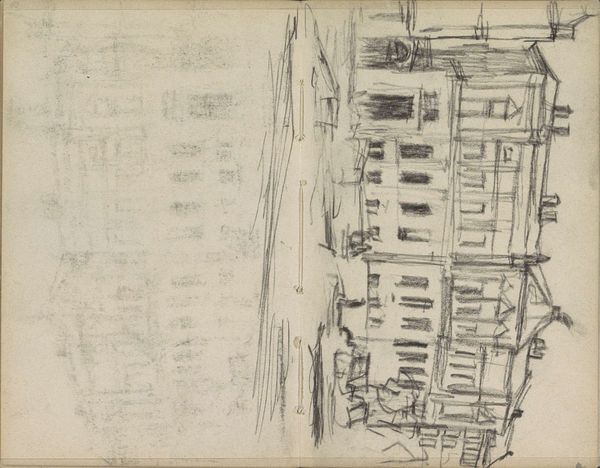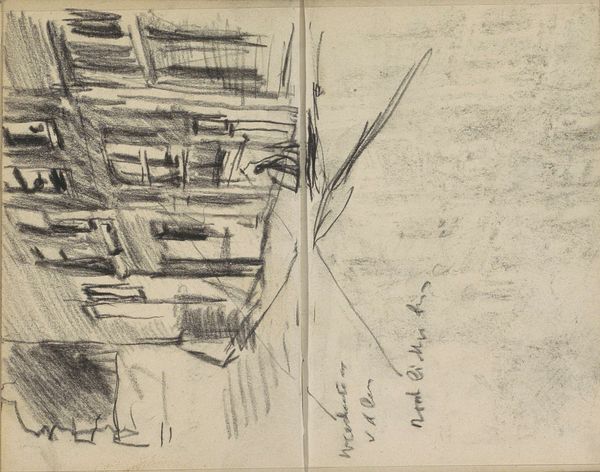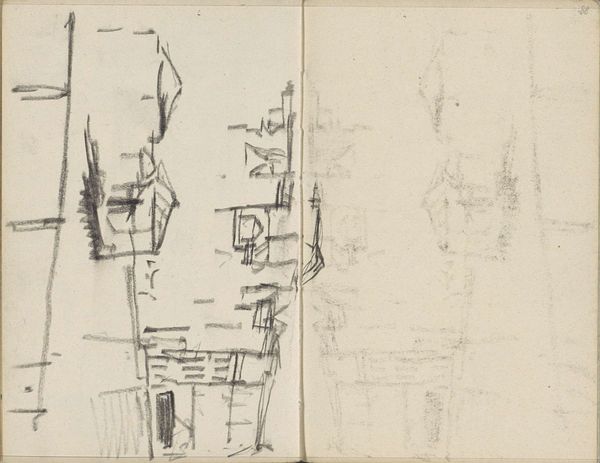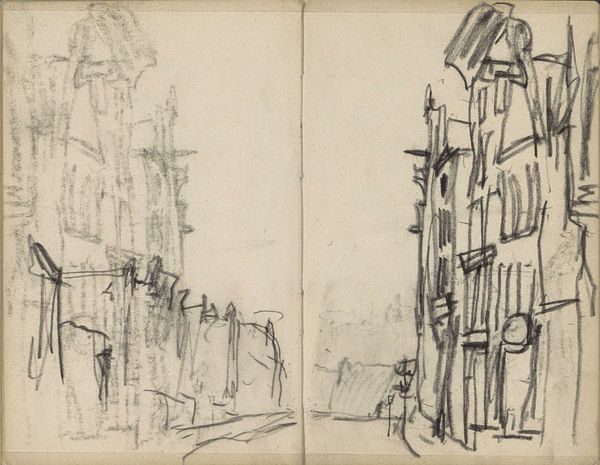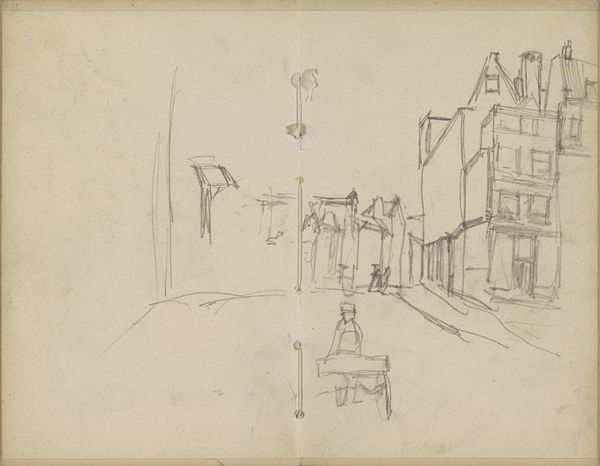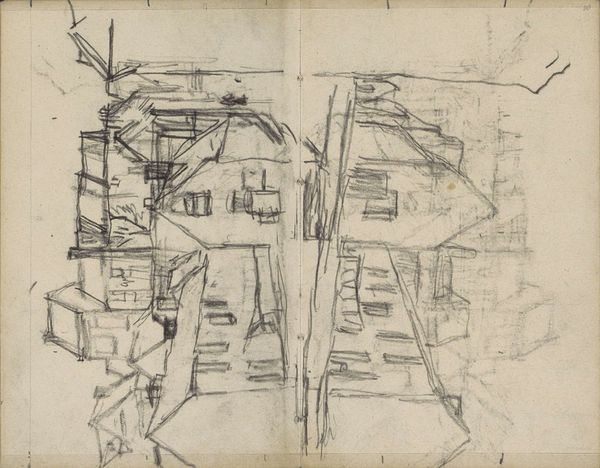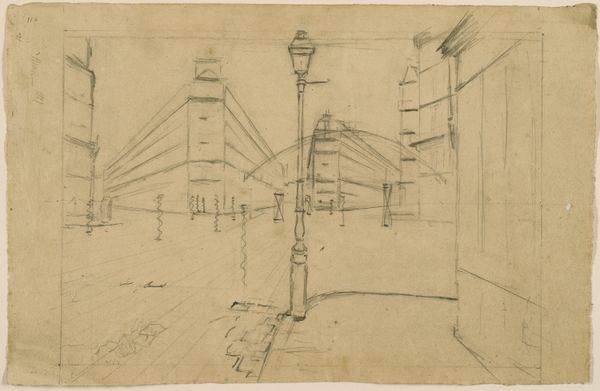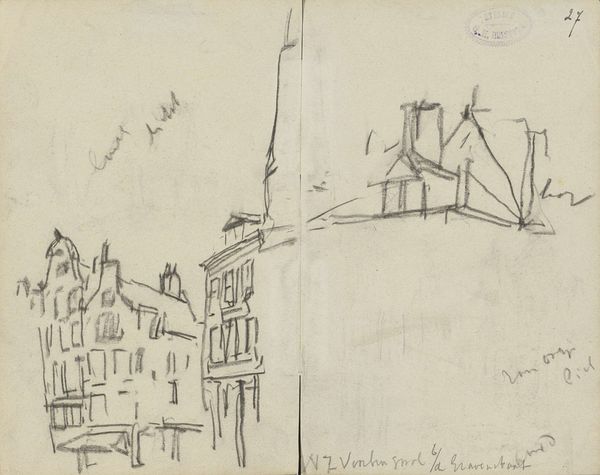
Copyright: Rijks Museum: Open Domain
Curator: Looking at this pencil drawing, Breitner has rendered what he calls "Gezicht te Antwerpen," or "View of Antwerp," sometime between 1907 and 1909. It's currently held here at the Rijksmuseum. Editor: There's a kind of ghostly, ephemeral quality to it, isn’t there? Just the barest suggestion of forms rising out of a hazy atmosphere. The image reads almost as a fading memory. Curator: Yes, there's a certain deliberate ambiguity that lends it an impressionistic feel despite being a cityscape captured through the precise medium of pencil. The buildings almost dissolve, lacking a fully realised volume, which can be seen as representing the social changes during that era. Editor: What is so impressive here, beyond Breitner's clear mastery of sketching, is the raw realism; this piece isn't prettified. The utilitarian architecture almost stands in for social concerns like housing and public space, and invites us to read this space anthropologically. Curator: Breitner was particularly interested in capturing the life of the streets, its energy. Although in his cityscapes the narrative feels different; they focus more on the emotional effects of space itself. Do you feel that is lacking here? Editor: Not entirely. It has something intimate that makes you imagine an interaction; or almost overhearing the citizens' daily experiences, since we see what seems like an environment they navigate every day. One senses its role for all inhabitants simultaneously, something more personal, perhaps, and a social connection in our own reception of the image, and a link between generations. Curator: It shows how an impressionistic technique can still be grounded in a sense of real place and time. Thank you for that insightful look into how Breitner was socially connecting with urban spaces at the turn of the century. Editor: And thanks to you. It makes me see the historical city not just as stone and mortar but also a dynamic, evolving theater of human life.
Comments
No comments
Be the first to comment and join the conversation on the ultimate creative platform.

